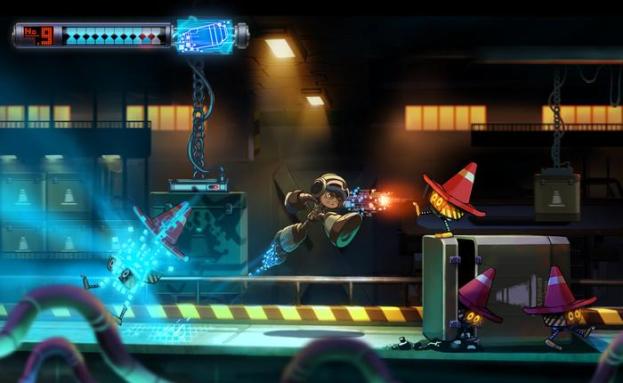
Keiji Inafune is a fascinating fixture of the Japanese video game development community. He was foundational during the Japanese industry’s formative boom in the 1980s, thanks in large part to his signature creation, Mega Man. While the series was an institution in the west – for both its spectacular games and his hilarious cover art from Germany, America, and elsewhere – he also remained a gripping testament to Japanese gaming, even down to the name itself. After all, he wasn’t Mega Man in Japan, he was Rock Man. His brother was Blues whereas here he was Protoman. And there were many Mega Man games, like the visual novel Super Adventure Rockman and Rockman: The Power Battles, that were originaly never planned to be released outside of Japan. Mega Man’s an international hero, but a deeply Japanese one.
Which is why Inafune and Mega Man’s transformations over the past five years have been so dramatic. Inafune took over as Capcom’s senior corporate officer in charge of R&D and de facto creative director in 2005, spearheading the company’s emphasis on outsourcing development of key games to North American and European studios with more modern sensibilities. After high profile failures with Bionic Commando (developed in Sweden), Dark Void (US), and the successful but still disappointing seller Dead Rising 2 (Canada), Inafune left Capcom in 2010. He was frustrated by the company’s unwillingness to further evolve and blamed recent failures on the company’s corporate myopia. He himself needed to seek new opportunities. Since departing, his new company Comcept has made a series of solid, but grimly depressing, games like Soul Sacrifice.
When he resigned, two major Mega Man games were in development. Mega Man Legends 3 for Nintendo 3DS, a sequel to Inafune’s action RPG passion project from the PS1 era, and Mega Man Universe, a LittleBigPlanet style online create-your-own game. Both were cancelled, and since Inafune’s departure, Capcom has been reticent to make new games in the series. Just one new title has been release in Japan, a widely reviled mobile game with social elements called Rockman Xover.

Inafune’s studio Comcept opened a Kickstarter campaign on Sept. 1 looking to fund Mighty No. 9, a sidescrolling platformer built in the style of Mega Man. Lead character Beck is a blue-tinted robot that fights other robots and gains new abilities based on their powers. Sound familiar? Beck doesn’t just gain a new gun when he fells a boss, though, he can transform his entire body, turning into things like a giant mallet or a heavy cargo loader on treads.
The development team is also familiar. Development is being handled by Takuya Aizu of IntiCreates, the studio behind Mega Man 9 and 10 as well as the Mega Man Zero series. Original Mega Man composer Manami Masumae and level designer Naoya Tomita are also on board. Classic Capcom character artist Kimo Kimo (Street Fighter Alpha 3 and The Legend of Zelda: The Minish Cap) is designing Mighty No. 9 heroes and foes with backing art director Shinsuke Komaki (Misadventures of Tron Bonne). Helping with international outreach, PR, and community are expatriots living in Japan like former Capcom producer Ben Judd, who wrote the English script for the original Ace Attorney, and localization team 8-4, Ltd. who recently produced the amazing English edition of Fire Emblem Awakening. If that team doesn’t whet your whistle, what will?
Right now, the game is planned for PC in 2015 provided Comcept raises the $900,000 they’re seeking on Kickstarter. If the studio hits $2.5 million, they’ll bring Mighty No. 9 to Wii U, Xbox 360, and Playstation 3. Those console releases seems likely. After just 12 hours, Comcept’s raised more than $480,000.


